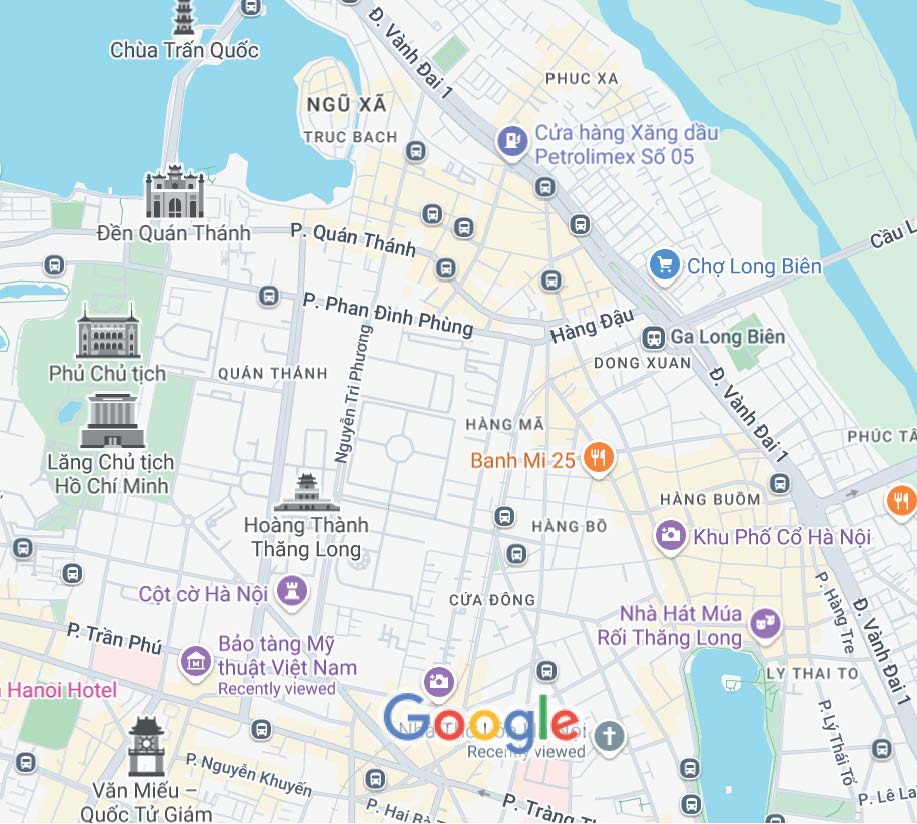
During our week in Hanoi the temperatures remained stuck in the low 60° F range (about 16° C) with overcast skies. Zero sun. On the plus side, zero rain.
It’s a good thing we each brought a light jacket, though we almost didn’t. We never anticipated it would be this cold for this long. If necessary we could have purchased knock off North Face or Patagonia jackets for about $8. They’re for sale everywhere.
Prior to planning this trip, our knowledge of Hanoi was pretty much limited to the Hanoi Hilton a/k/a Hoa Lo Prison (Di tích Nhà tù Hỏa Lò). Known to us as the prison for American POWs during the Vietnam War, most of the museum is actually dedicated to “revolutionary struggle” against the French occupation during the first half of the 20th century.
We arrived mid-morning during the week and found the museum quite crowded. It turned out to be a much more popular destination than we anticipated. I’m glad we went but the crowds somewhat ruined the experience. We spent about 45 minutes fighting with others to look at displays.
Tickets cost 50,000 ₫ each (about $2). We passed on the 150,000 ₫ audio guide (about $6). Luckily the signs included English descriptions.
The current museum is housed in the original gate house. The remainder of the prison has been torn down. The majority of the first floor deals with the French occupation, exploring resistance and torture themes. Heaps of praise is given to the resisting communist Vietnamese.
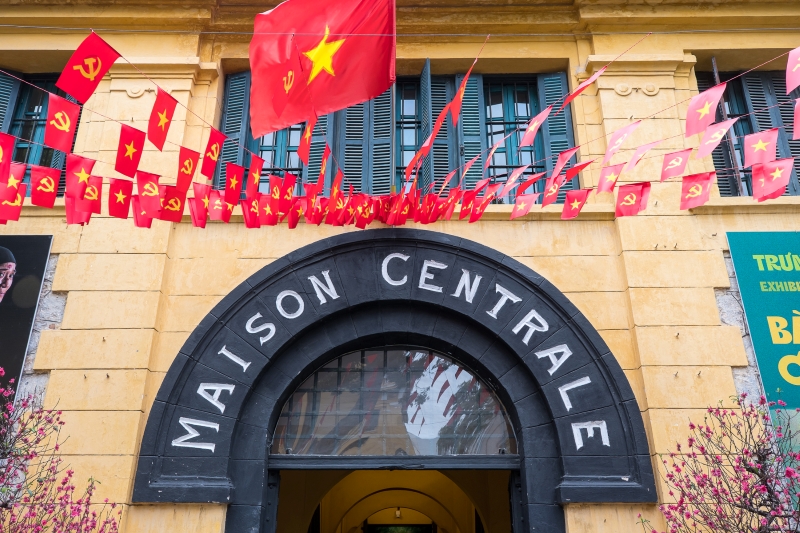
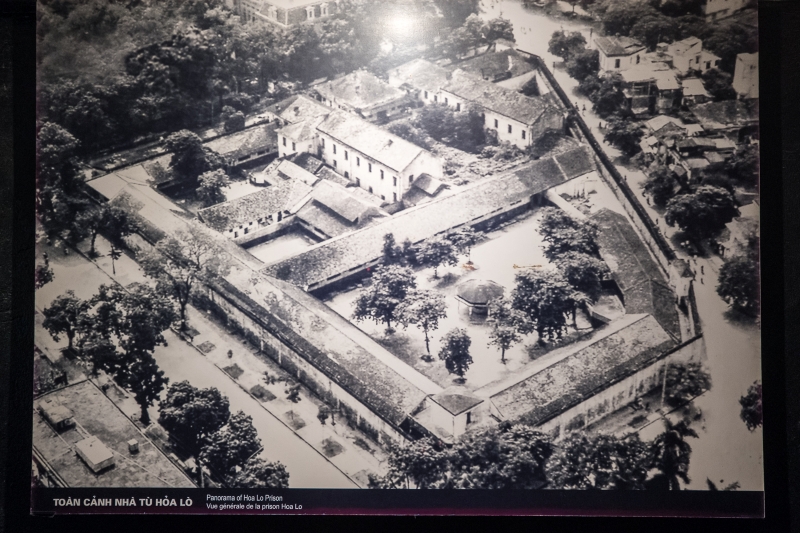
Outside are several displays on the Vietnam War, in particular the American bombing campaigns. Two rooms dealt with the capture and ultimate release of American POWs.
Perhaps unsurprisingly there are a lot of photographs including Senator John McCain.
A short movie about life in the Hanoi Hilton talks about how well the American POWs were treated (making it look like a country club) and how they praised their Vietnamese captors and apologized for the unjust war.
So, yeah, history is written by the victors. Our impression is that Vietnamese communist propaganda is sprinkled liberally throughout the museum.
On one of the nicer weather days we headed over to the Imperial Citadel of Thang Long (Hoàng Thành Thăng Long Hà Nội) after lunch. Originally constructed as the Royal Palace during the Lý dynasty in 11th Century, it remained the capital until 1789 when the Tây Sơn dynasty moved the capital to Huế, constructing a new citadel there.
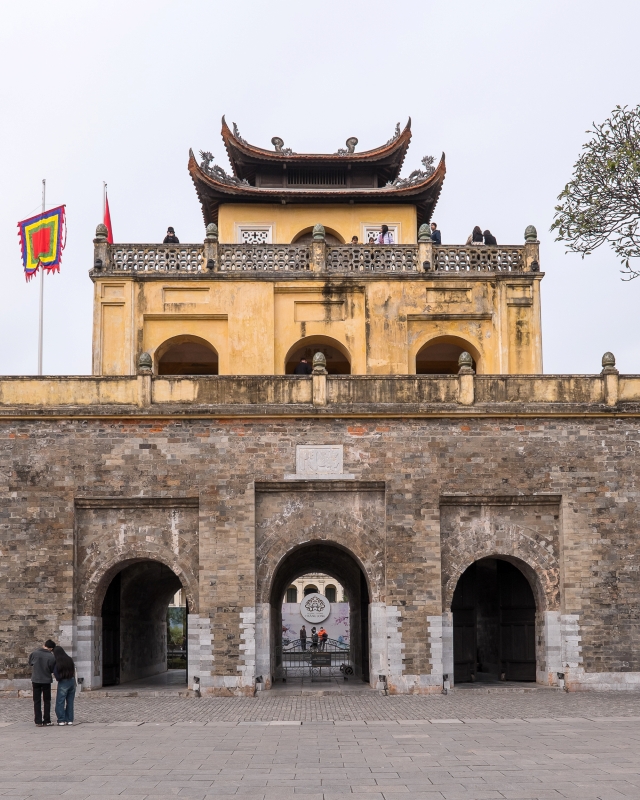
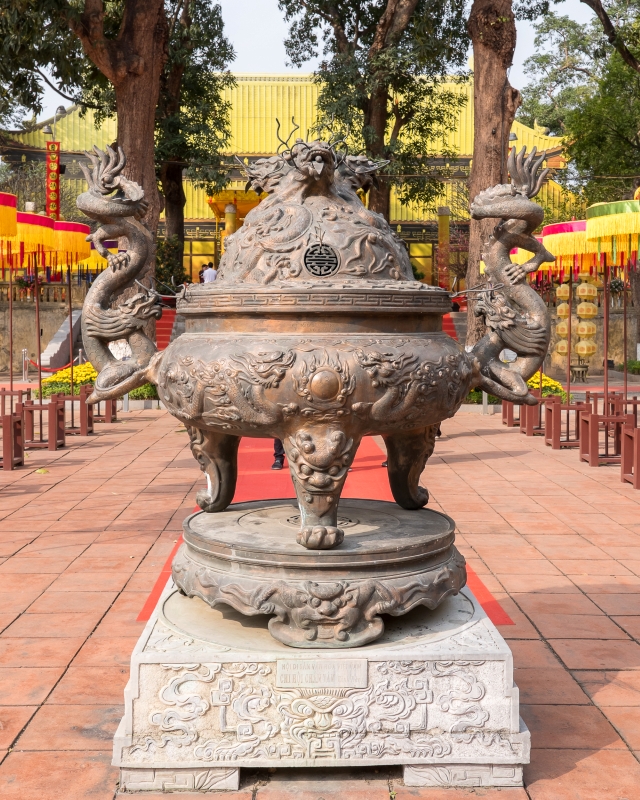
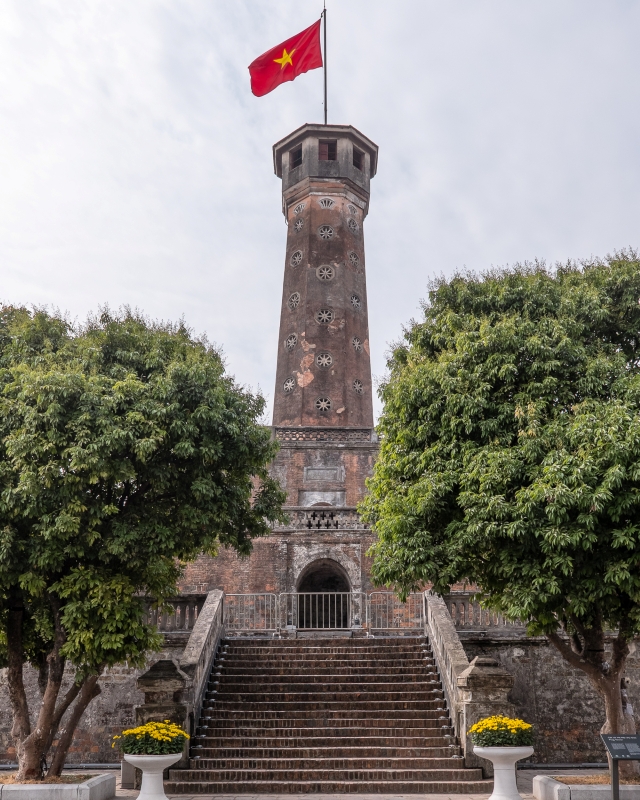
In the early 1800s the citadel underwent extensive reconstruction in Vauban style architecture, much of which was later destroyed by the French early 1900s. What remains from the early construction is largely ruins of foundations, which are being excavated in cooperation with the French.
Most recently the Imperial Citadel was used as headquarters for the North Vietnamese Army during Vietnam War.
Tickets cost 100,000 ₫ each (about $4). Rental costumes cost extra. Yes, you can rent oriental outfits to dress up for photos. Judging by the number of middle-aged Asian women doing just this, I’d say it’s a fairly popular and lucrative activity.
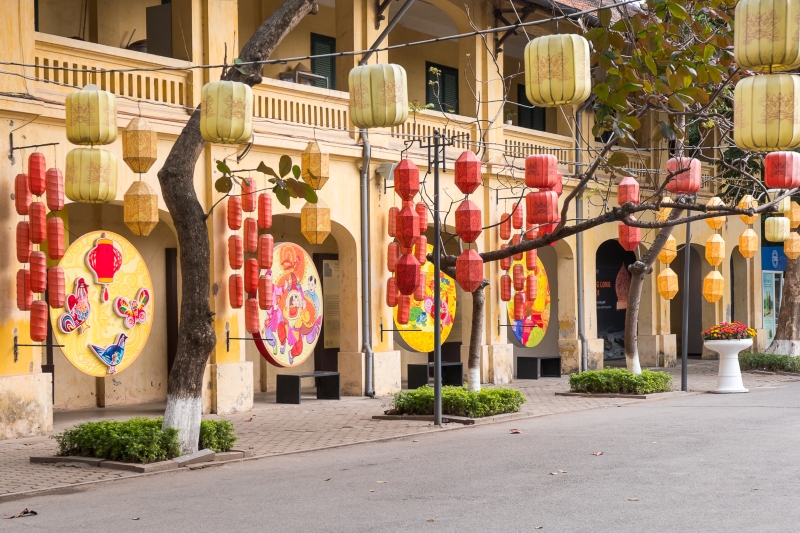
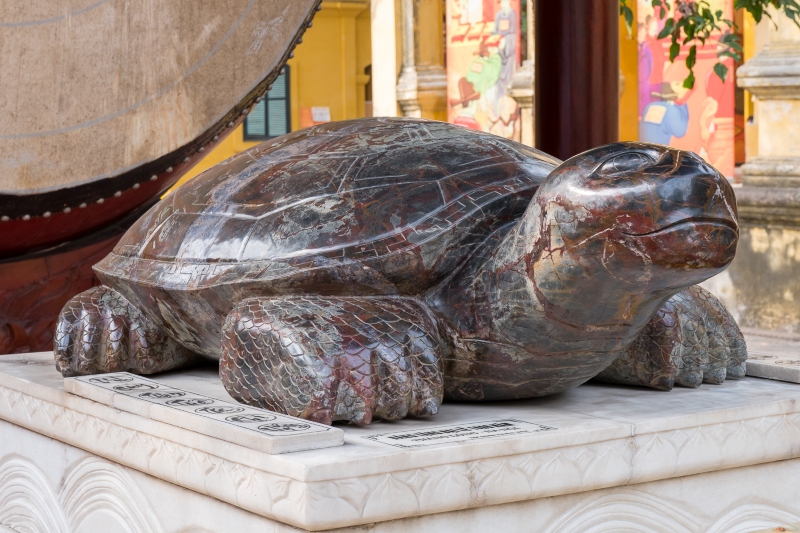
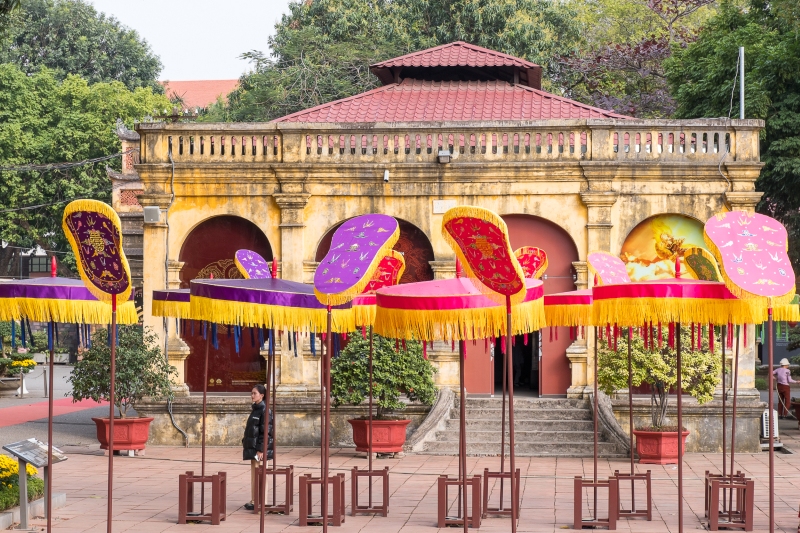
A playground, several small exhibition buildings, and a few cafés round out the place. The citadel is so large that it did not feel crowded at all even though there were quite a few visitors present. Across the street from the main area is a smaller section dedicated to archaeology and excavation of ruins.
Out in front of the citadel is a bus stop where we caught bus 50 to head to Tran Quoc Pagoda (Chùa Trấn Quốc), a Buddhist temple at West Lake (Hồ Tây). We used Google Maps to make sure we jumped on a bus that was going where we wanted to go.
Navigating the bus was surprisingly easy. When you get, tell the conductor (not the driver, there actually is a separate conductor) where you are going. Or in our case, show them your route and destination on Google Maps. You’re then told a price, which is paid in cash. Our bus ride from the citadel to the pagoda cost 10,000 ₫ each (about $0.40 – very affordable).
We followed the blue dot on Google Maps so we could anticipate our stop. It was not necessary. The conductor told us when our stop was coming up, making sure we were at the door ready to exit.
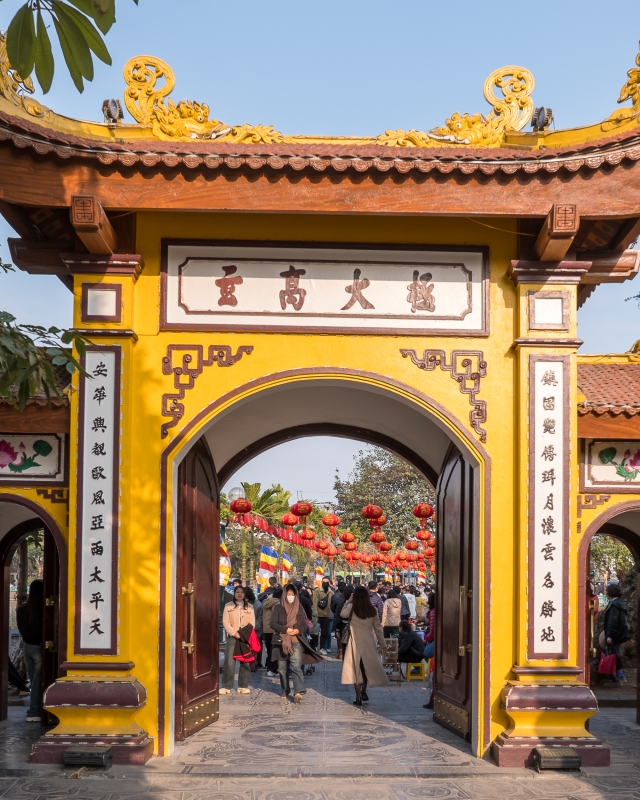
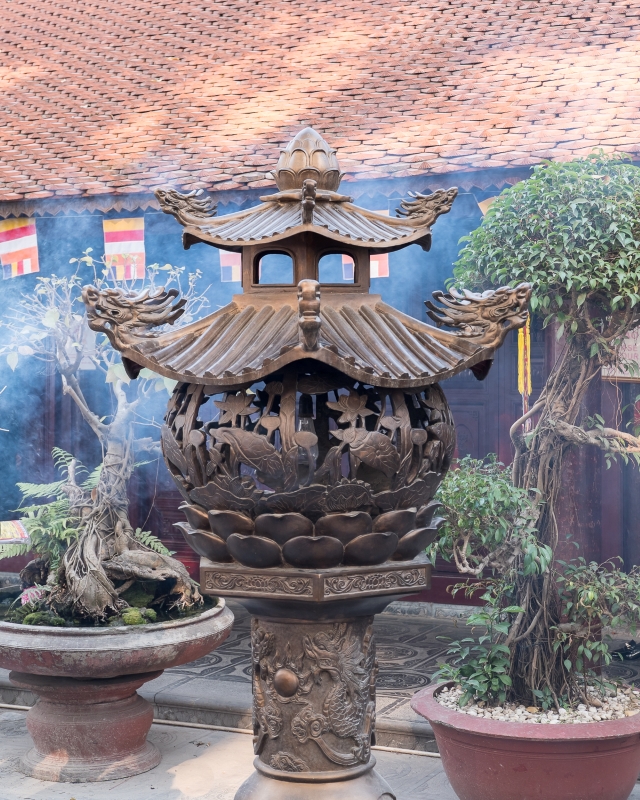
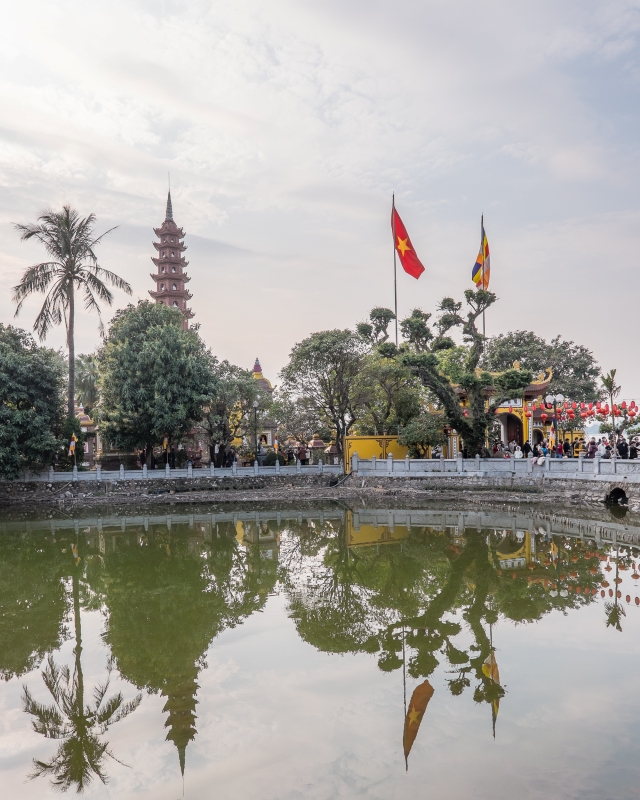
Our bus stop was just past the pagoda. As the bus crawled by, I was tempted to tell the conductor that our plans were changing on the fly. Tourists were everywhere. It was a madhouse. But the conductor did not speak English and I don’t speak Vietnamese, so communicating new plans would have been a nightmare.
To make matters worse, the four lane street in front of the pagoda is divided by metal barriers. The only way to cross the street is to go halfway across and find a spot to squeeze through the barriers. No median.
Vietnamese drivers routinely pull into lanes of oncoming traffic to pass busses, scooters, bikes, and pedestrians. Actually, in many areas there are no marked lanes. Just pavement, first come first served. This makes for some fascinating viewing at intersections without traffic signals. Hell, quite often we saw scooters driving a short distance against traffic, going the wrong way.
Anyway, given the congestion around the pagoda, I can appreciate that the authorities wanted to prevent vehicles from crossing a mythical center line. Unfortunately in doing so it made crossing the street that much more difficult.
So we braved the traffic, crossed the street, went to the pagoda, fought the crowds, and left in about 20 minutes. Stephanie was happy, though, because we immediately caught another bus to go to Anita’s Cantina, a decent Mexican restaurant nearby.
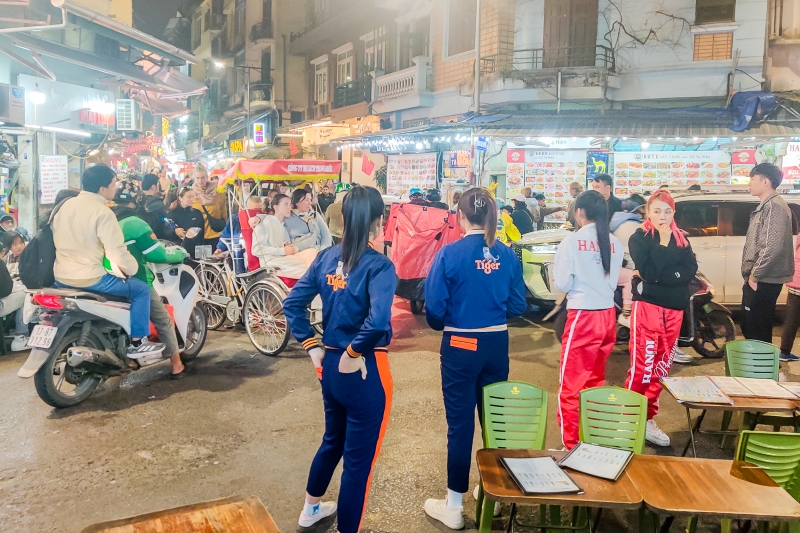
On our last night in Hanoi we decided it was time for one last tourist trap, beer street. Basically this is about two blocks of bars that set up tables and chairs in the street for the express purpose of selling beer to tourists.
We parked ourselves in a couple of plastic chairs at the intersection of P. Tạ Hiện and P. Lương Ngọc Quyến streets, ordered a couple of slightly overpriced Tiger beers, and enjoyed the show.
The show, in this case, is the traffic trying to navigate the intersection. Vans, cars, scooters, bicycles, tuk-tuks, street vendors, and pedestrians pass through a state of constant flux and collision. At least once or twice an hour you can count on a major traffic jam bringing all traffic to a complete standstill for 5 to 10 minutes. This is usually the result of several vans or cars trying to pass by at the same time.
Scooters, bicyclists, street vendors, and pedestrians can usually wind their way through just about anything. But when one or more cars get stuck, it’s a disaster.
Once the police drove a truck down the street with a loudspeaker telling the restaurants to get their tables and chairs out of the street. That worked for about two minutes, the time it took for the employees to move the tables and chairs, the police to drive by, and the tables and chairs placed right back out.
It seems stupid to sit there just to watch traffic, but it is surprisingly entertaining … certainly worth an hour and a few beers at 35,000 ₫ a bottle (about $1.40).
We did not stay late as we had an early wake up call the next morning to head to Ha Long Bay and, hopefully, some sunny weather.
Garrett and Stephanie
If you have not already done so, read our other post about Hanoi:
Hanoi, Vietnam (February, 2025, Part I). Learning to cross the street; enjoying the Fine Arts Museum; and, a coffee on Train Street.
For additional posts about Vietnam, or elsewhere in the world, check out our Travel Blog. It contains collected links to all of our travel posts.
Want to subscribe (or unsubscribe) for email notification of new blog posts? It is only two to three emails a month. Send your name and email address to slowtravelchronicles@gmail.com, and note subscribe (or unsubscribe) in the subject line. All email addresses will be kept confidential and not sold to any third-party. You won’t get any marketing junk or sales pitches from us.

This is very interesting and timely! It will give me more questions for my next Pedicure! My favorite nail person is from Vietnam originally, but has been on Signal for many years. Since she speaks almost perfect English, we have no problem communicating!